Latest Posts
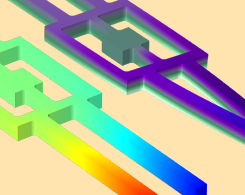
Modeling a Double-Tuning-Fork MEMS Gyroscope
Piezoelectric rate gyroscopes and similar MEMS devices offer an affordable way to measure angular velocity in applications such as skid control and rollover detection in automobile systems.

Happy Birthday, Niels Bohr
Niels Bohr’s work in physics started in college, when he solved a surface tension problem for the Academy of Sciences. He went on to work in atomic structure and quantum mechanics.

Happy Birthday, Sir William Ramsay
Argon got its name, which means “lazy”, because it doesn’t react with other elements in air — or seem to do much of anything. The chemist behind this discovery went on to find the noble gases.

The COMSOL Conference 2019 Kicks Off Today in Cambridge
The COMSOL Conference 2019 started today in Cambridge, U.K. Catch a glimpse of the event here.

Happy Birthday, Adrien-Marie Legendre
From polynomials and functions to a moon crater and main belt asteroid, French mathematician Adrien-Marie Legendre has quite a few namesakes.
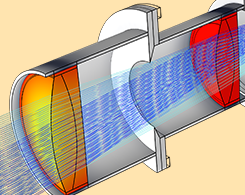
Zeiss, Abbe, and the Evolution of Microscopes and Optical Research
The story of Carl Zeiss and Ernst Abbe involves a picturesque town in Germany, compound microscopes, and a hammer and anvil. See for yourself with a glimpse into the history of optical research.

The Origin Story of the Sampling Theorem and Vladimir Kotelnikov
Less than a century ago, we didn’t have the theorem that is fundamental to our understanding of electronic communication today. Fortunately, Vladimir Kotelnikov entered the picture.
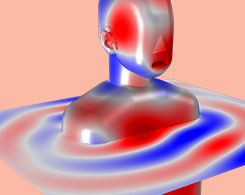
Analyzing the Acoustics of a Head and Torso Simulator
Acoustics engineers designing hearing aids, cellphones, and headphones can perform standardized measurements faster and cheaper with simulation, as shown in this example.

Happy Birthday, James Joseph Sylvester
Ever heard the word combiants? What about plagiograph, allotrius, or zetaic? The Shakespeare of mathematics, James Joseph Sylvester used his love of poetry to find new ways to describe theories.
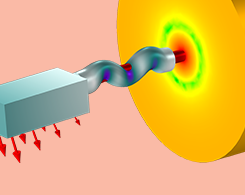
How to Use Solver Suggestions in Acoustics Modeling
When you model large, industry-scale acoustics, ever find it challenging to efficiently solve the problem with the hardware at hand? Enter the solver suggestions in COMSOL Multiphysics®.

A Look Back at Early Film Technology
Did you know that one of the most prominent filmmakers during the advent of cinema was Thomas Edison? Here, we discuss early film technology, instruments, and the people who used them.
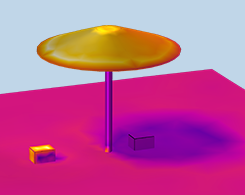
The Importance of Thermal Radiation in Your Models
Conduction and convection tend to get more attention from simulation engineers, but radiation plays an important role as well. Learn how (and why) to account for thermal radiation in your models.

Happy Birthday, Samuel P. Langley
The person behind the NASA Langley Research Center, Samuel P. Langley once invented a system of standardized time in order to get more funding for his astronomical observatory.
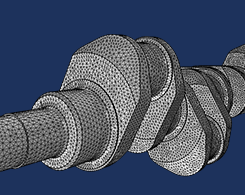
How to Refine and Adapt Imported Meshes
2 features for getting the most out of your imported meshes: 1. The Refine operation quickly reduces element size. 2. The Adapt operation modifies the element size via an expression.

Happy Birthday, Frederick Sanger
Thanks to English biochemist Frederick Sanger, we have a method for sequencing DNA, which has enabled us to learn more about the building blocks of life.
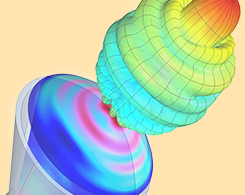
How to Produce 3D Far-Field Plots from 2D Axisymmetric RF Models
When modeling certain resonant structures, you can get the best of both worlds: 2D axisymmetry offers efficient computations while 3D far-field plots are available for postprocessing results.

Defeating Giant Movie Monsters Using Mathematical Modeling
The predator-prey equation can predict how we’d fare in a monster invasion, as well as real-world biology and ecology scenarios like shark overpopulation and tumor movement.

Happy Birthday, Joseph Keller
Mathematician Joseph Keller is best known for his geometrical theory of diffraction, but he also pursued other areas of study, even developing a teapot spout that doesn’t spill.

Samsung Amps Up Loudspeaker Designs with Simulation
Some organizations reach success and then shift the goal post. Take Samsung, for instance: Although they lead the market for televisions and smartphones, they set their eyes on another goal…
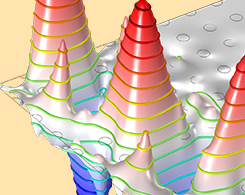
Engineering the Flow of Light Using Photonic Crystals
Did you know that the discovery of photonic crystals in 1980 came about because of an attempt to reduce the losses in semiconductor lasers in a specific frequency range?

Happy Birthday, Friedrich Bessel
Friedrich Bessel could have led a comfortable life had he stayed in his career at a commercial firm. Instead, he was inspired to study astronomy, physics, and planetary behavior and movement…

5 Facts for 50 Years: The Apollo 11 Lunar Landing
Think you know everything about the Apollo 11 mission? We go over 5 fun facts about the landmark aeronautical event in celebration of the 50-year anniversary.

Recursion and Recursively Defined Geometry Objects
Broadband antennas and metamaterials are 2 fields of engineering in which recursively defined geometry objects are a useful modeling capability. Writing methods makes this task easier.
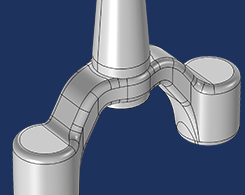
How to Automatically Remove Small Details in Your Model Geometry
Have you ever wished for an automatic way to remove small details in your model geometry that are causing an unnecessarily fine mesh or a poor mesh quality? Enter the Remove Details operation.
